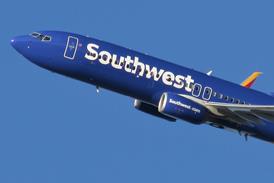Tim Furniss/LONDON
Two European Space Agency (ESA) Cluster II science satellites were successfully launched from the Baikonur Cosmodrome, Kazakhstan, on 16 July by a Starsem-operated Soyuz Fregat booster. The launch took place a day later than originally planned because of an electrical connection problem discovered during the countdown on 15 July.

Two more Clusters will be carried by a similar booster on 9 August. The first pair were placed into an initial parking orbit of 240km (150 miles) by 18,000km, with the orbit due to be raised by the spacecraft's propulsion systems.
The 1,200kg (2,640lb) Astrium-built satellites, carrying 11 science instruments weighing 71kg and provided by France, Sweden, the UK, the USA, Austria and Germany, will study solar wind and how it interacts with the Earth's magnetosphere.
The craft will make the most intensive survey yet of solar-Earth interaction as part of international collaboration to investigate the physical connection between the sun and the Earth.
The Clusters - named Rumba, Salsa, Samba and Tango - will operate in 64.8° inclination, elliptical orbits varying between 19,000km and 119,000km. The satellites will be anything from 100km to 20,000km apart.
Flying in a tetrahedral formation, the four spacecraft will collect the most detailed data yet on small-scale changes in near-Earth space and the interaction of the charged particles of the solar wind and the Earth's atmosphere.
The Cluster II series satellites replace the four craft that were lost in the maiden launch failure of the Ariane 5 from Kourou, French Guiana, in June 1996.
The first Ariane 5 suffered a catastrophic guidance failure about 30s after launch and was destroyed automatically by the launcher's on-board system.
Source: Flight International























